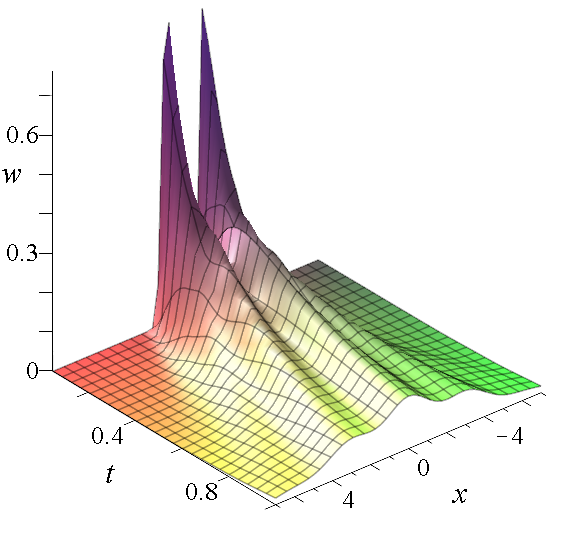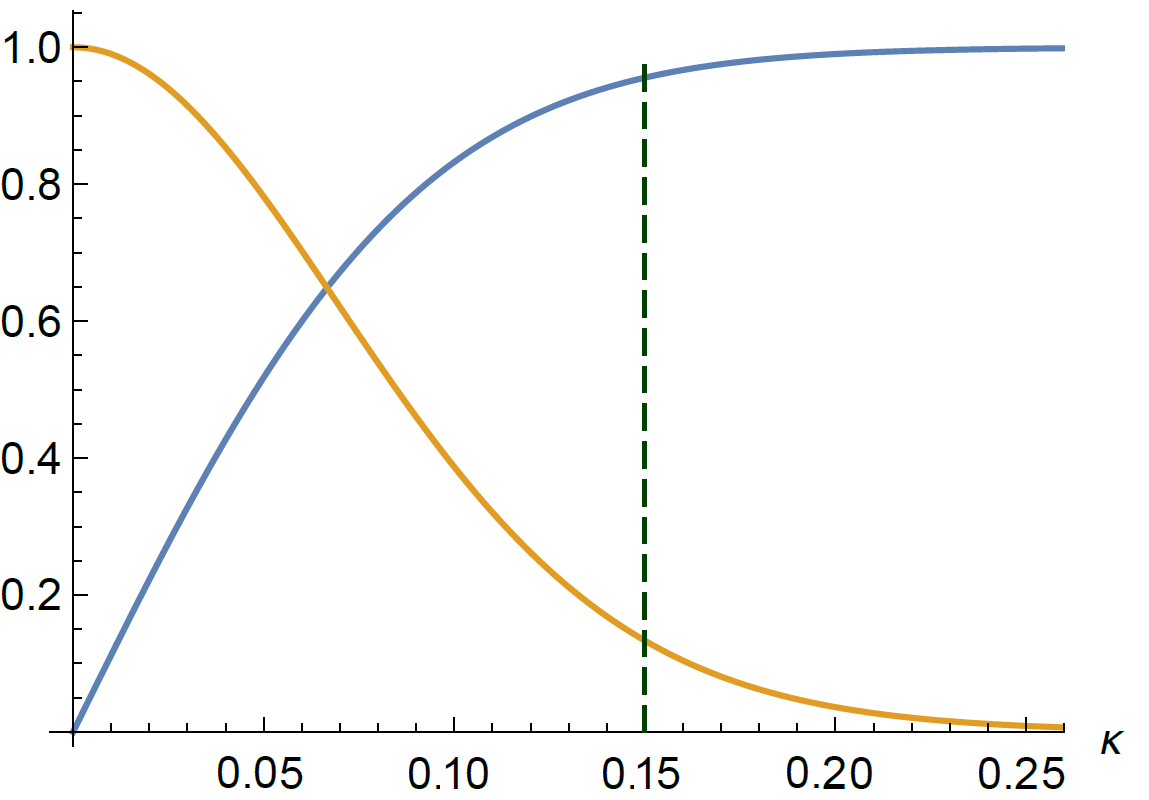Contributors
M. Daiber, I. Miller, M. Freyberger
Collaborations
W.H. Zurek (Los Alamos, USA)
Funding
-
We examine matter-waves passing through a double-slit. Without monitoring the path of the particles, the usual interference patterns are visible on a screen behind the double-slit. However, if we try to measure the position of the particles, this interference pattern will typically be destroyed. This topic has already been discussed in Ref. [1] using a different set up and an inequality [2] quantifies that there is a smooth transition between the visibility of the fringes and the information about the path. We also find such a transition in a conceptually simple model using pointer-based measurements.
Our pointer is an additional quantum system, which is positioned behind the double-slit. Using a suitable interaction, the pointer will be kicked by the particle and hence store information on its path. This interaction will be characterized by a coupling strength \( \kappa \) which allows us to realize a gradual measurement of the particle’s path.
Figure 1 shows a typical probability distribution for the particle to be at position \(x\) for a time \(t\) behind the double slit. The interaction strength is given by \(\kappa =0.15\). Besides this relatively strong coupling to the pointer we can still observe an interference pattern, but we have also acquired clear information about the path of the particle [3], as can be seen in Fig. 2. Here we quantify the information about the path by regarding the distinguishability \(D\) between the particle passing the left or the right slit. It clearly behaves complementary to the visibility \(V \) of the interference pattern. For \(\kappa =0.15\) we obtain a decent level of which-way information without losing all of the visibility [4].

Fig. 1: Position distribution of the particle as a function of time \( t \).

Fig. 2: Fringe visibility \( V \) (orange line) and the which-slit distinguishability \( D \) (blue line) as a function of the coupling strength \( \kappa \). The green line shows the coupling used for Fig. 1.
M. Daiber, I. Miller, M. Freyberger
W.H. Zurek (Los Alamos, USA)
-
[1] W. K. Wootters, W. H. Zurek, Complementarity in the double-slit experiment: Quantum nonseparability and a quantitative statement of Bohr's principle, Phys. Rev. D 19, 473 (1979)
[2] B.-G. Englert, Fringe-Visibility and Which-Way Information: An Inequality, Phys. Rev. Lett. 77, 2154 (1996)
[3] M. Daiber, Materiewelleninterferenz und Komplementarität, Zulassungsarbeit Staatsexamen Physik, Institut für Quantenphysik, Universität Ulm, 2016
[4] L. F. Streiter, Komplementaritätsrelation zwischen Interferenz- und Welcher-Weg-Information, Bachelorarbeit Physik, Institut für Quantenphysik, Universität Ulm, 2016